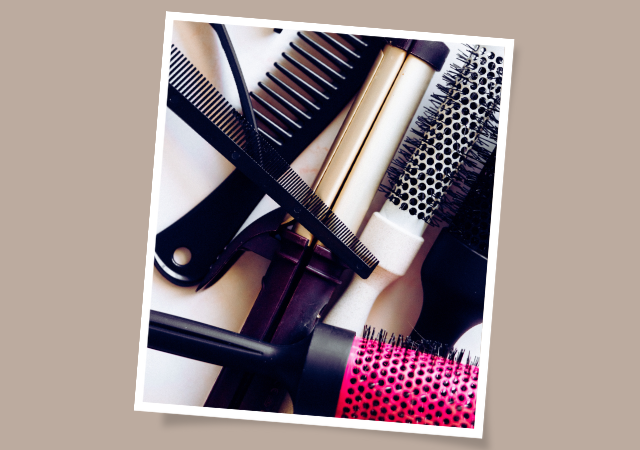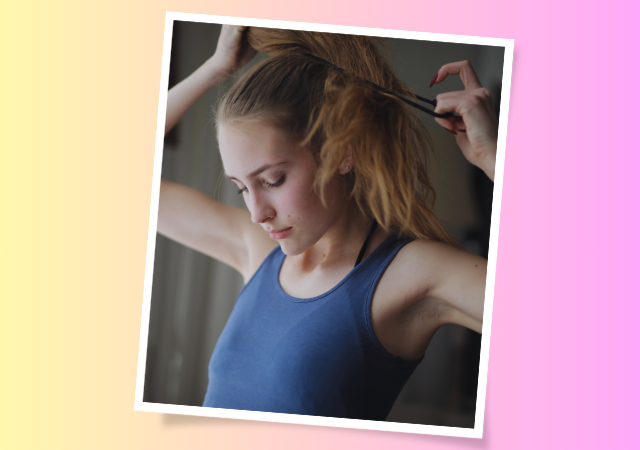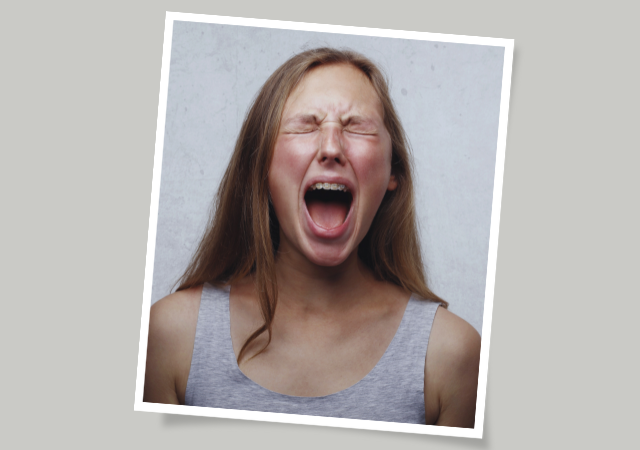Don’t Worry About Hair Styling Again – Master These Tips Now!
Introduction
Are you tired of facing daily battles with your unruly locks, struggling to achieve the perfect hairstyle you desire? The frustration of dealing with hair that just won’t cooperate can be a daily challenge for many. But fret not, because in this article, we’re about to unveil the secrets that will change your hairstyling game forever.
Whether your hair is straight, curly, or somewhere in between, our comprehensive guide is designed to help you master the art of hairstyling. Say goodbye to those dreaded bad hair days and hello to a world of confidence and self-expression through your locks. These expert tips, tricks, and techniques are not just easy to follow, but they’ll also make you wonder why you didn’t discover them sooner.
From understanding your hair type to selecting the right tools, perfecting basic techniques to tackling advanced styling challenges, and even troubleshooting common issues, we’ve got you covered. By the end of this article, you’ll be equipped with the knowledge and skills to rock any hairstyle you desire. So, let’s embark on this hair transformation journey together – it’s time to take control of your hair, boost your confidence, and become a hairstyling pro!
Understanding Your Hair Type

The first step in your journey to perfect hair styling is understanding your hair type. It’s essential to recognize that not all hair is the same, and each type requires different care and styling techniques.
1. Straight Hair
Straight hair is sleek and smooth. Styling this type of hair is relatively straightforward, but it can be prone to looking limp or flat. To add volume, consider using a volumizing shampoo and conditioner. You can also use a round brush to create some natural-looking waves.
2. Curly Hair
Curly hair can be a bit more challenging to style. It tends to be dry and frizzy, so it’s crucial to keep it well-moisturized. Use a hydrating shampoo and conditioner designed for curly hair. Avoid brushing your curls, as this can cause frizz. Instead, use a wide-tooth comb or your fingers to detangle.
3. Wavy Hair
Wavy hair falls somewhere between straight and curly. It often requires a balance of moisture and control. Opt for a smoothing shampoo and conditioner to tame frizz while maintaining those beautiful waves. Use a diffuser when blow-drying to enhance and define your waves.
Once you’ve identified your hair type, you can tailor your styling routine to suit it better. From choosing the right products to selecting the most appropriate tools, your hair type will guide your decisions.
Hair Care Basics

Before delving into the world of hair styling, it’s essential to establish a strong foundation in hair care. Healthy hair is more responsive to styling and less prone to damage.
1. Proper Washing
Start with the basics: shampoo and conditioner. Make sure you’re using products suitable for your hair type. While it’s generally a good idea to shampoo your hair every 2-3 days, it’s best to condition it more frequently. Apply conditioner from mid-shaft to the ends, avoiding the scalp, which can make your hair look greasy.
2. Drying Techniques
How you dry your hair can significantly impact the outcome of your styling efforts. After washing, gently squeeze out excess water with a soft towel. Avoid vigorously rubbing your hair, as this can lead to frizz. If you have curly hair, consider using a microfiber towel to prevent disruption of the natural curl pattern.
3. Hair Masks and Treatments
Give your hair some extra love by incorporating hair masks and treatments into your routine. These products can help nourish and strengthen your hair, making it more amenable to styling. Use a deep conditioning mask once a week to keep your hair in top shape.
Essential Hair Styling Tools

Investing in the right hair styling tools is crucial for achieving the look you desire. Here’s a breakdown of some essential tools and their functions:
1. Hair Dryer
A good quality hairdryer is a must-have. It helps you set the foundation for many styles, from sleek and straight to voluminous and bouncy. When using a hairdryer, start with a lower heat setting and gradually increase the heat as needed to avoid heat damage.
2. Straightener/Curling Iron
These tools are essential for achieving a variety of styles. Straighteners are great for achieving sleek, straight looks, while curling irons add beautiful curls and waves. Make sure to use heat protectant products to shield your hair from excessive heat.
3. Round Brush
Round brushes are perfect for adding volume and shape to your hair. They’re especially useful for those with straight hair who want to create a bit of texture.
When choosing your styling tools, don’t just go for the cheapest option. Invest in high-quality tools, as they tend to be more reliable and cause less damage to your hair in the long run.
Basic Hair Styling Techniques

Now that you have the right tools and a solid hair care routine in place, it’s time to dive into the basic styling techniques that can transform your look.
1. Prepping Your Hair
Before applying heat or styling products, always start with freshly washed and conditioned hair. Towel dry your hair gently, and use a heat protectant spray to shield your locks from the potential damage of hot styling tools.
2. Straightening and Smoothing
If you want to achieve a sleek, straight look, section your hair and use a straightener. Start at the roots and slowly glide the straightener down the length of each section. This technique will give you smooth, straight hair without the need for a salon visit.
3. Curling and Volumizing
For those desiring curls and volume, a curling iron is your best friend. You can create various curl sizes by adjusting the iron’s barrel size and the time you hold each strand around it. To add extra volume, backcomb your hair at the roots or use a volumizing spray.
4. Styling Different Hair Lengths
The techniques mentioned above can be adapted for different hair lengths. The key is to adjust the section size and the time you spend with each strand to achieve your desired style. Short hair can be styled with small sections, while longer hair might require larger ones.
Advanced Hair Styling Tips

Once you’ve mastered the basics, you can take your styling game to the next level. Here are some advanced tips for those looking to create more intricate and sophisticated looks:
1. Creating Updos and Braids
Updos and braids can add elegance and variety to your style. Experiment with different braid styles and updo designs to find the looks that suit you best.
2. Mastering Blow-Drying
Blow-drying is an art, and it’s worth investing time in perfecting this skill. A well-executed blow-dry can make your hair look as if you just stepped out of a salon.
3. Achieving Beach Waves and Messy Buns
Effortlessly chic styles like beach waves and messy buns can be achieved with a little practice. They’re perfect for casual, everyday looks or laid-back evenings.
Troubleshooting Common Hair Styling Issues

Hair styling can sometimes present challenges. Here’s how to tackle some common issues:
1. Dealing with Frizz and Humidity
To combat frizz, use anti-frizz products and avoid over-brushing. Additionally, consider a silk pillowcase to minimize friction that can contribute to frizz.
2. Fixing Hairstyle Mistakes
Mistakes happen. If you’re not satisfied with the result, don’t fret. Use a little water or a styling product to adjust your hair, and remember that practice makes perfect.
3. Managing Hair Damage and Split Ends
Prevent damage by using heat protectants, and make sure to trim your hair regularly to get rid of split ends.
Product Selection and Application

Selecting the right styling products can make a world of difference. Here’s how to go about it:
1. Choosing the Right Products
The first step is to identify your hair’s needs. For instance, if you have curly hair, look for products that enhance curls and provide moisture. Straight hair might benefit from products that add volume.
2. Applying Products Effectively
Use a small amount of product at first and build up if needed. Avoid applying too much, as this can weigh your hair down or make it look greasy. Distribute the product evenly by running your fingers or a comb through your hair.
Seeking Professional Help

While these tips and techniques can significantly improve your hairstyling skills, there are times when professional help is necessary. Here are some situations in which a hairstylist can be your best friend:
1. Special Occasions
When you have an important event like a wedding, prom, or a job interview, a hairstylist can create a flawless, polished look that lasts.
2. Complex Styles
Intricate cuts, coloring, or styles often require the expertise of a professional to achieve the desired result.
3. Maintaining Healthy Hair
Regular visits to the stylist can help maintain your hair’s health, especially if you use a lot of heat or styling products.
Conclusion
In conclusion, you don’t need to worry about hair styling anymore. By understanding your hair type, following proper hair care, using essential tools, mastering basic and advanced techniques, and troubleshooting common issues, you can become a true hairstyling pro. Don’t forget to choose the right products, and when in doubt, seek professional help for special occasions or complex styles. With practice and patience, you’ll be well on your way to transforming your hair into a masterpiece and boosting your confidence through your stunning hairstyles. Say goodbye to those bad hair days and hello to a world of endless possibilities. You’ve got this!

My name is Rohit Vagh and I’m a content writer specializing in fashion and lifestyle. I have three years of experience in this field and have written various articles. My writing style is creative and engaging, and I strive to create content that resonates with my readers. I have a deep passion for fashion and am constantly researching the latest trends and styles to make sure my readers are up to date. I’m excited to continue my career in blogging, and I’m always looking for new opportunities in the fashion and lifestyle space.





